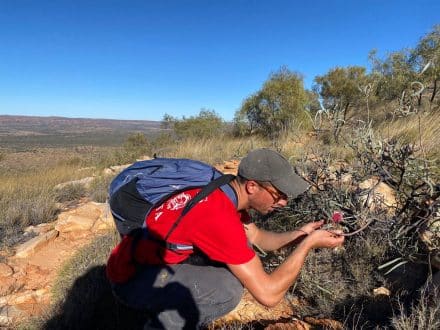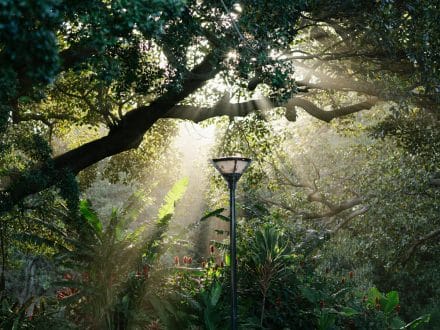A trek in Tasmania morphs into a journey through time, discovering the knowledge and traditions of Indigenous Australians.
Like many Australians, we love to camp, especially on the coast. But to walk with the palawa on their traditional Country – wukalinalarapuna is a true privilege and an enlightening experience. The coast and hinterland is revealed in a new light.
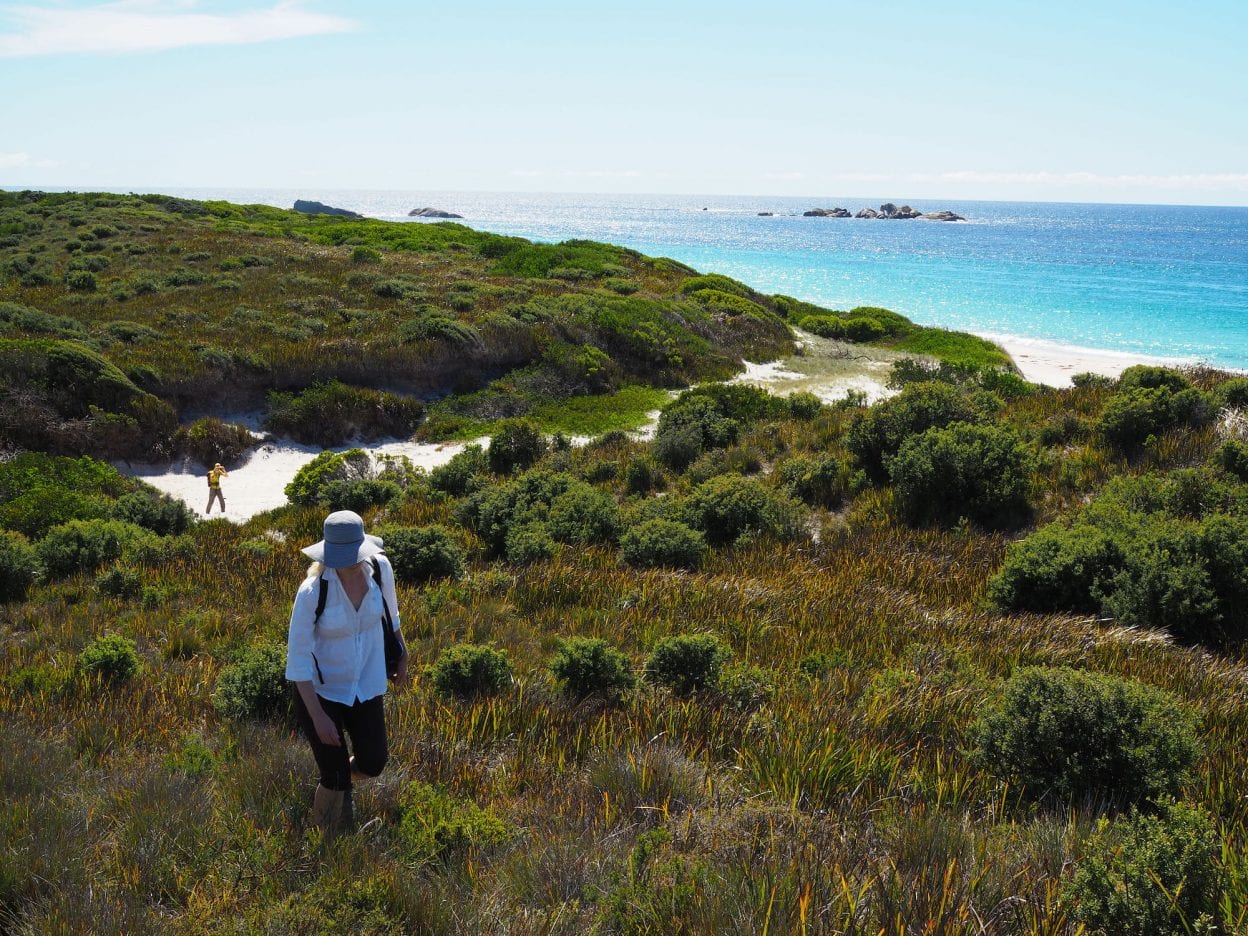
The wukalina walk is a 15-year project of palawa elder Clyde Mansell. Having been part of the establishment of the northern branch of the Aboriginal Information Centre in the 1970s, later to become the Tasmanian Aboriginal Centre, Clyde had a vision to create a camping and walking experience in his ancestral Country of far north-east Tasmania. His dream included modest and considered accommodation, drawing on the designs and knowledge of the world’s earliest culture. Clyde had crossed paths with young Hobart architects Taylor and Hinds during University of Tasmania lectures and his instinct drove him to back these emerging architects.
The camp’s location was chosen by Aboriginal trainee rangers as an appropriate siting for krakani lumi – place of rest. This is a discrete standing camp and its location can just be made out from high on wukalina (Mt William) on the first morning of our trek. The expansive view from the 350-metre summit reveals Cape Barren Island and Mt Munro to the north. Beyond to the east stretches a broad swathe of coastal heathland with granite outcrops remnant from the Tabbebberan orogeny. Sweeping away to the south large white bays stretch to larapuna – Eddystone Point and beyond into the Bay of Fires.
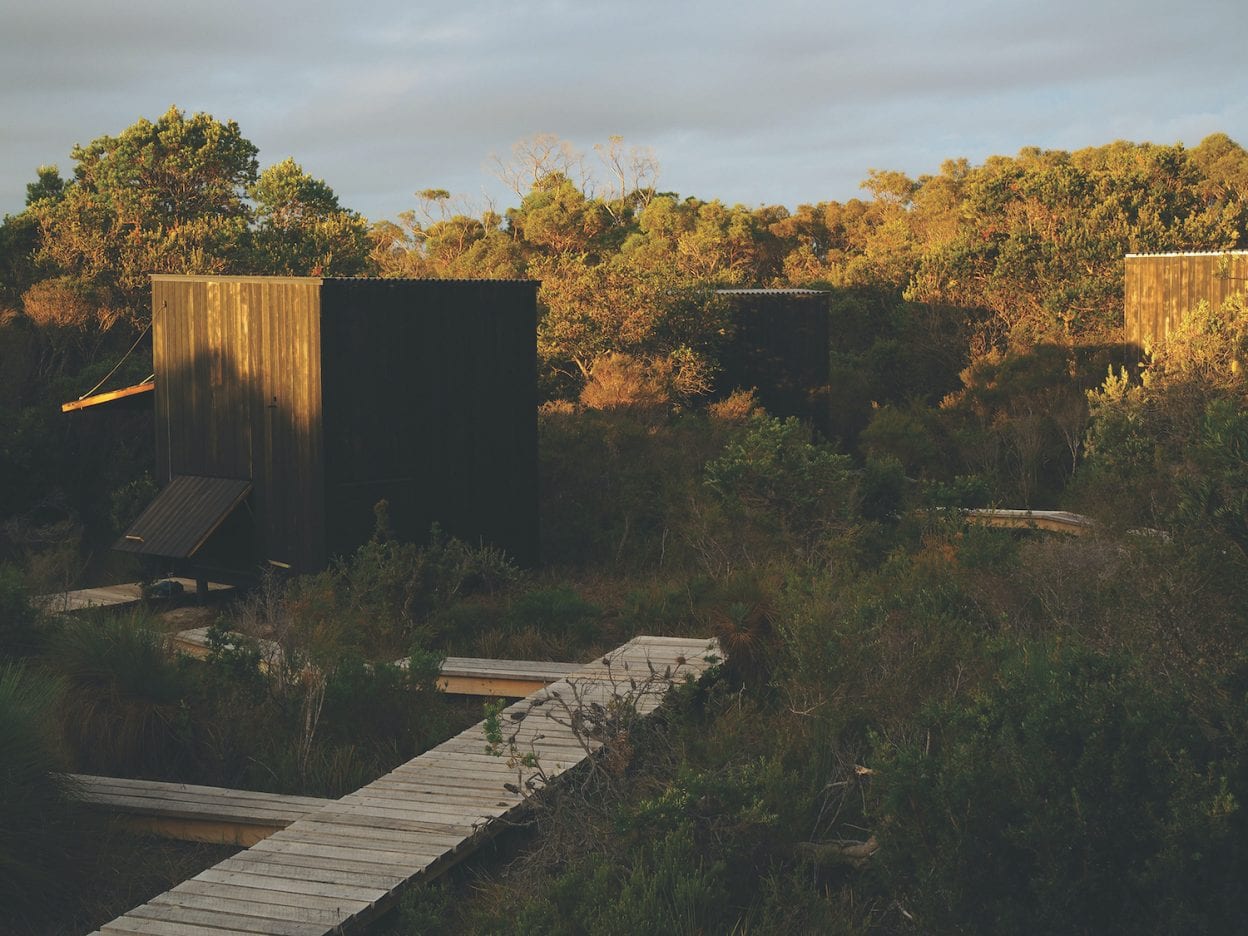
Arriving mid-afternoon at krakani lumi it is apparent why the location has been chosen. During a site visit post-construction architect Mat Hinds had observed fantails flying by periodically and marking their territory with bird calls, “the pavilion is locked into the spatiality of the banksia trees and the pattern of the site,” he notes. Sitting back in the dome of the pavilion, we can hear the slapping shore break beyond the frontal dune. It is a sheltered hollow with the accommodation huts nestled amongst the stands of banksia and she-oak. Ben, our lead guide, welcomes us to Country with a smoking ceremony. There is a lot to absorb from this ancient culture and the explanatory process is cleverly measured. Our small band of 12 on the walk – including guides Janaha, Jacob and Bert – will be together for four days and we have plenty of pondering time to absorb their imparted knowledge.

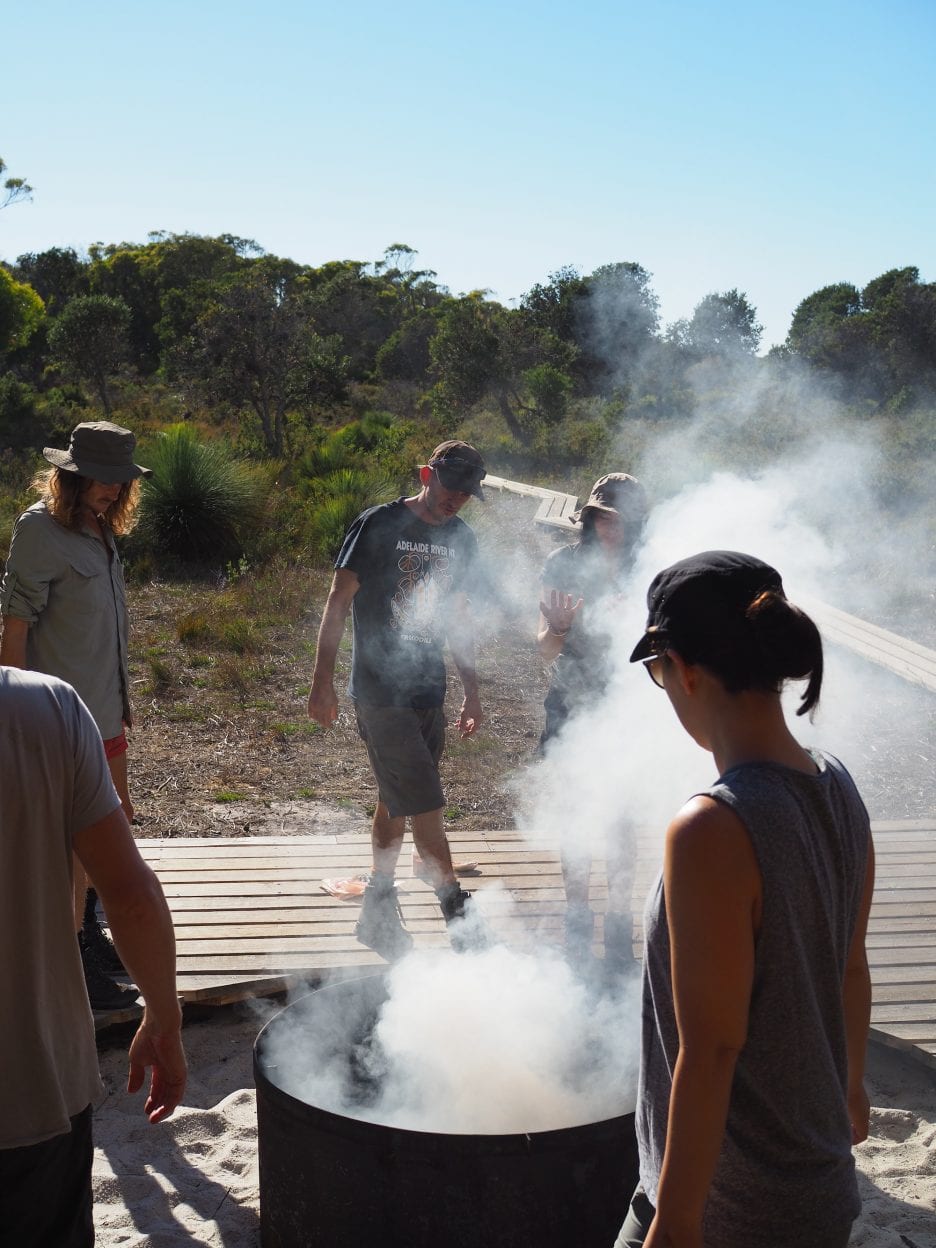
As a full moon rose from beyond the she-oak grove, we gathered by the fire pit, intrigued by Clyde’s Great Spirit retelling. This story does resonate, our having camped and explored Australia’s coastal fringe for many decades. To me it is an explanation of the essence of custodianship of the land, a learning that ideally should be encouraged and nurtured across Australia’s primary schools.
Rarely do I miss a sunrise when camping but the bush noises and night breezes wafting through this cleverly designed camp led to a deep and long sleep in our scrub abode. The buildings are clad in silvertop ash which has been charred. This feature has cultural origins but is also in keeping with the setting. The structures were built offsite by AJR Construct in Devonport and delivered by helicopter over the final few kilometres. The process of “skyhooks” both minimised the impact on the fragile terrain and also enabled the architects to adjust the orientation of each individual hut. Mat points out that “we could finesse the location to tune the buildings relationship with the trees and light and even clarify the privacy between two huts.”

Breakfast is served in the common kitchen/dining area with the rising sun flooding in through a bronzed fly-wire opening. We are to spend the morning exploring the surrounds of krakani lumi. A track leads to the lagoon behind the domed hut. We inspect the bones of the camp as we head off. A welded steel frame is clad with shingle-like blackwood fins on the concave of the dome. Tucked in the space between the frame and the vertical outer walls are the deep cycle batteries and the inverter. On the roof an array of panels provides 5.3 kW of power.
Leaving the camp we trek north via the beach past hooded plover and pied oystercatchers to a prominent outcrop. In its lee a football-fieldsized midden extends away from the coast. Ben points out artefacts including cobble stones for sharpening implements. The Bassian plain linking to Gippsland was cut by rising sea levels at the end of the last ice age, some 12 000 years ago. The palawa and other clans of Tasmania were then isolated. On days when a wallaby catch may have been missed there was (and still is) a plentiful supply of bush tucker. We tasted sea cabbage – ideal for a salad – and peeled sag, a sweet-pea-like treat.
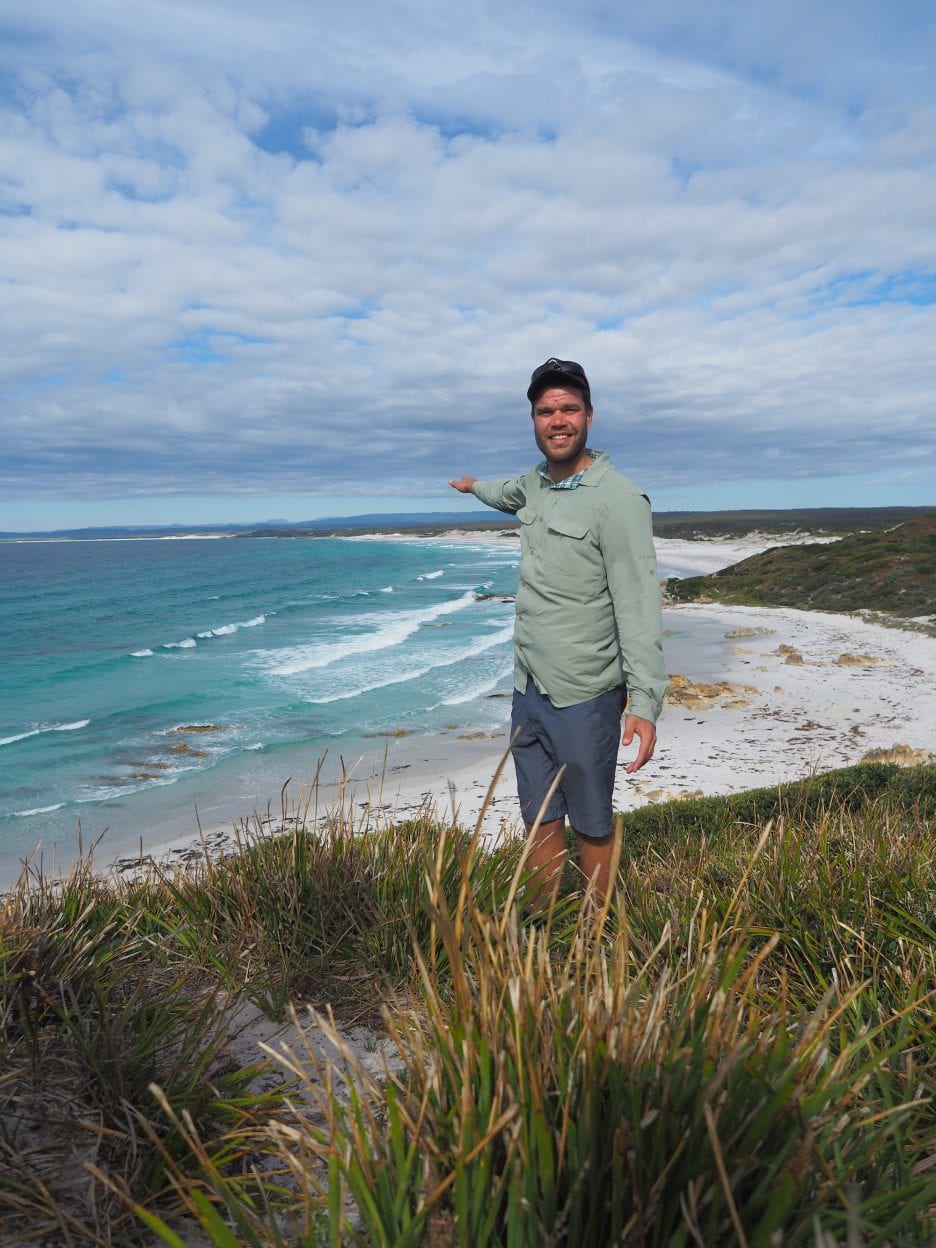

The afternoon was spent back at krakani lumi around the fire pit painting clap sticks and absorbing more stories. Often our band would fall silent. The sea kept going, birds called and shadows lengthened. Jacob stoked the fire and prepared a feast of wallaby and mutton bird. The waning gibbous moon rose above the she-oaks as the fire glowed and cracked. The palawa history is one of fire: for hardening tools, nurturing the land, flushing out game, sending signals, providing a cooking source and a warm sanctuary.
On the third day we departed the standing camp for a 17-kilometre stage to Eddystone Lighthouse. We walked, swam, learnt, pondered and gazed into the beyond. In a gulch below the lighthouse Ben collected warreeners, the prized sea snails. These were washed and cooked in their own juices and served as a delectable entrée. During dusk we wandered the nearby tracks encountering the local wombat as black wallabies grazed en masse.

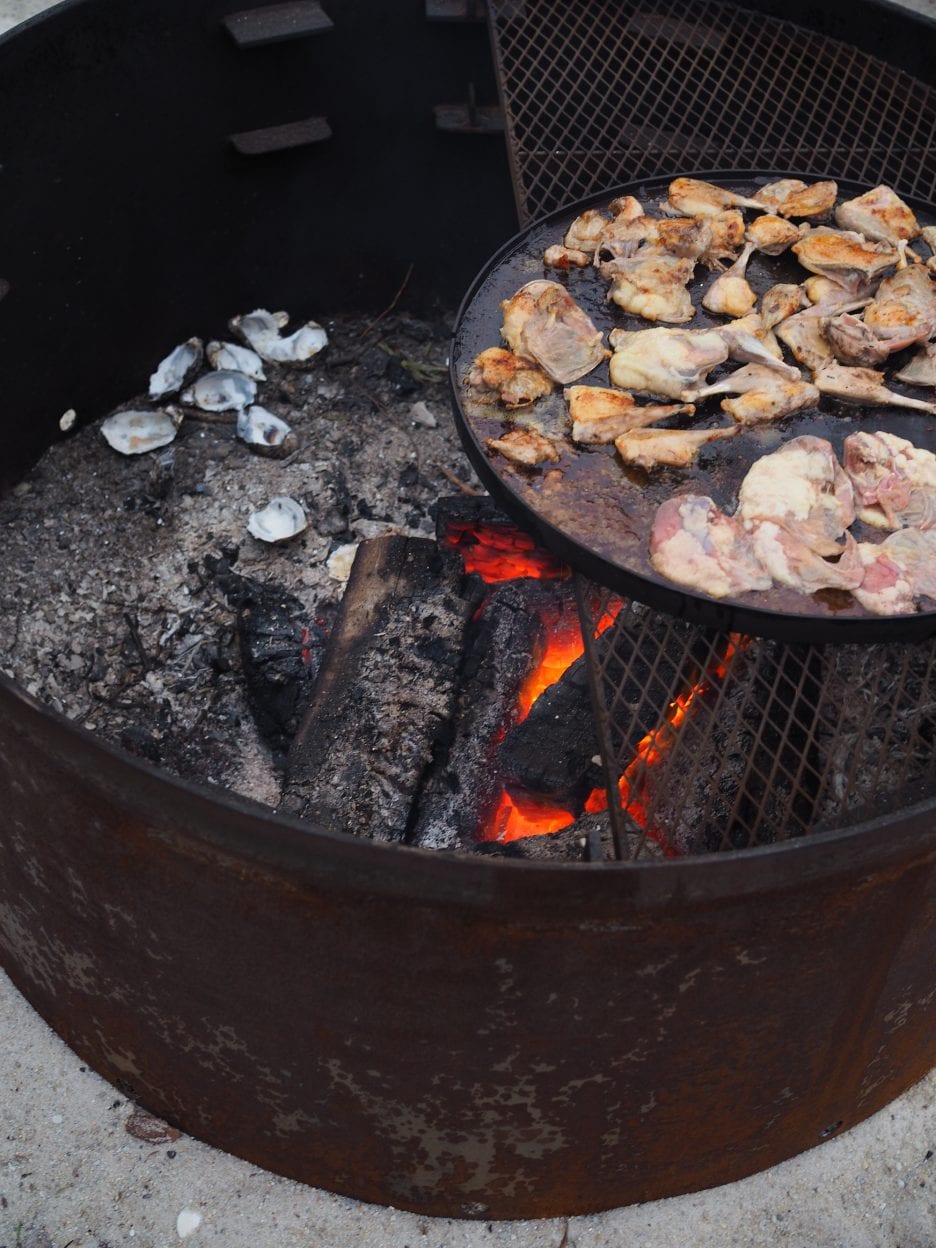
We gathered at Eddystone Point on the final morning with a fresh southerly sweeping up the coast. Jacob told us about Tobias Furneaux sailing by and observing a multitude of fires around Anson Bay and beaches. The navigator realised this was a place of shelter, food and water. Jacob asked us to pause before we headed off and to imagine this land some 200 years ago – picture the daily hunt, the land care, the gatherings. The wind whistled through the melaleuca as we stared silently down the coast and back in time.
